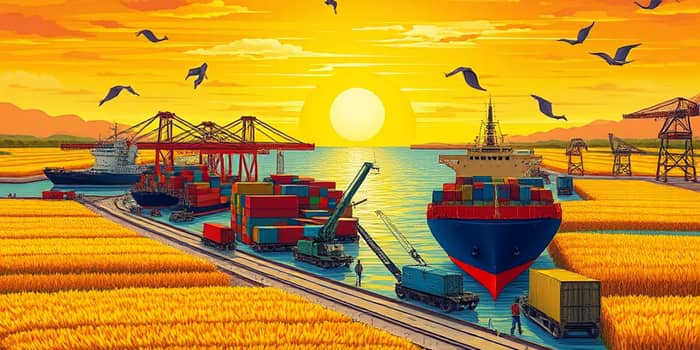
In an era of shifting global demand and persistent price pressures, U.S. agriculture stands at a crossroads of opportunity and challenge. Fueled by rising food costs and dynamic market forces, American farmers and exporters find themselves navigating uncharted territories.
Fiscal year 2025 marks a new milestone: the United States is forecast to send $170.5 billion worth of agricultural products abroad. This represents a modest increase of $500 million from earlier projections, driven primarily by surging corn and feed grain shipments. Grain and feed exports now total $37.7 billion, with corn alone up by $1.4 billion, reflecting robust global demand.
Meanwhile, oilseed exports are expected at $32.4 billion, down $1.1 billion due to fierce competition from Brazil and Argentina and softer orders from China. Livestock, poultry, and dairy shipments remain strong at $39.7 billion, offering a lifeline to farmers recovering from pandemic-era disruptions. Cotton exports, however, have dipped to $4.1 billion on reduced volumes.
On the import side, the United States is set to bring in $219.5 billion in horticultural products, coffee, and processed foods, driven by consumer tastes for fresh produce, specialty items, and gourmet coffee from Latin America and Europe. This growth pushes the agricultural trade deficit beyond $40 billion — a reminder that global supply chains are deeply interconnected.
While China’s demand for U.S. soybeans and oilseeds has waned, other markets are stepping forward. Exports to Mexico are climbing, offsetting declines in Canada and China. Southeast Asia and the Middle East are hungry for American wheat, dairy, beef, and poultry, and the European Union continues to import distilled spirits and tree nuts in healthy volumes.
For exporters, penetrating these markets requires tailored strategies for local buyers, savvy logistics planning, and proactive engagement with trade missions. Building relationships with distributors and adapting product grades can unlock new revenue streams.
Unlike the general U.S. inflation rate, which has moderated to 2–2.4%, food inflation remains highly volatile. Labor shortages, energy costs, and weather extremes — from droughts to floods — continue to push prices upward. American families now spend nearly $90,688 annually, up from $74,061 in 2019, with a significant share going toward groceries.
Supply-side costs are well above historical averages, driven by higher wages, machinery maintenance, and rising fertilizer prices. On the demand side, global incomes and urbanization fuel appetites for meat, dairy, and processed foods. Policy also plays a decisive role: a strong dollar dampens foreign purchasing power, while tariffs and trade agreements can either accelerate or restrict flows.
Farmers, exporters, policymakers, and consumers all have roles to play in adapting to these realities. By embracing innovation, building resilience, and sharing knowledge, stakeholders can turn challenges into long-term gains.
Consumers can also reduce waste, support local producers, and adapt recipes to seasonal availability, easing pressure on global supply and promoting sustainability.
The road to 2026 and beyond will not be without obstacles. Climate unpredictability, policy shifts, and market volatility remain ever-present. Yet the remarkable adaptability shown by U.S. agriculture — from pivoting to new markets to adopting precision farming — offers hope.
By investing in sustainable practices, strengthening trade relationships, and sharing best practices across communities, stakeholders can build a more resilient food system. Collaborative innovation drives meaningful progress, ensuring that both producers and consumers benefit.
Ultimately, the surge in agricultural exports amidst food inflation underscores a critical truth: challenges can spark transformation. As markets evolve and pressures mount, a united approach — grounded in data, powered by technology, and rooted in community — can secure prosperity for generations to come.
References













